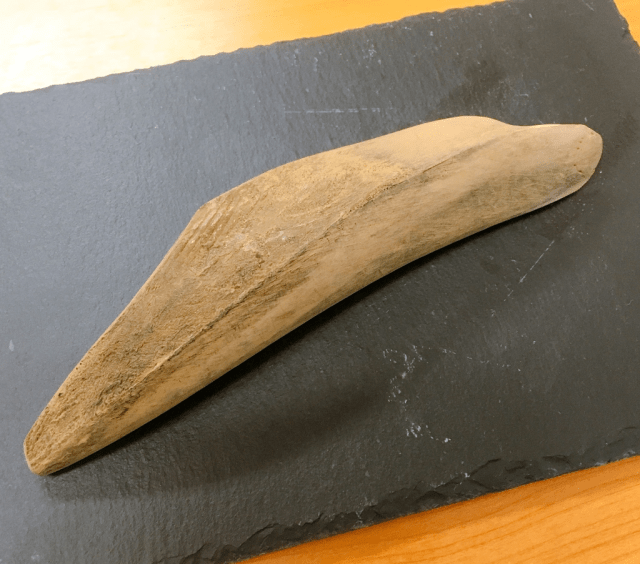
Mr. Sato tries his hand at grating his own katsuobushi, and explains why you should too.
In the course of his duties here at SoraNews24, our ace reporter Mr. Sato has eaten some…unusual things. 16-year-old instant ramen, fallen snow lying on the streets of Tokyo, and salt made from his own sweat have all been on his professional menu at one time or another, and so we’d forgive you if you saw this photo and thought that Mr. Sato was about to chow down on a piece of driftwood.
However, what he’s really holding there is a block of katsuobushi, or dried bonito. One of the most important seasonings in traditional Japanese cooking, katsuobushi is a key ingredient a number of recipes, like okonomiyaki and takoyaki, as well as the soup stocks for miso soup and soba/udon noodle broth. Since it’s such an ubiquitous element of Japanese cuisine, most people buy their katsuobushi pre-grated, like in the pouches seen here.
But if you go to upscale grocery stores, or the specialty food shops on the bottom floors of Japanese department stores, you can also buy non-grated katsuobushi, which is essentially a dried bonito fillet.
Mr. Sato picked up this katsuobushi at the Shinjuku branch of department store Isetan, just a few blocks away from SoraNews24 headquarters. Priced at 1,964 yen (US$17.50) for 209 grams (7.4 ounces), it’s quite a bit pricier than pre-flaked versions, but true gourmets insist this is the way to go.
Culinary professionals and home chefs who regularly work with premium ingredients use a special grating box, called a kezuriki, to grate their katsuobushi. However, since this was Mr. Sato’s first time to do his own grating, he decided to see how far he could go with an ordinary kitchen knife and vegetable peeler.
As he grabbed the katsuobushi in his off hand, Mr. Sato was instantly struck by how incredibly hard it is. If you swung it with enough force, you could easily use it like a weapon (and with the proper technique, katsuobushi can be fashioned into an absurdly sharp knife). It’s so hard that the package even had an arrow printed on it, informing us of which direction we should grate in for the smoothest motion.
Armed with both that knowledge and a knife, Mr. Sato began slicing into the katsuobushi…
…at long as you can call the super-thin cuts he was able to make “slices.”
Next he tried the peeler…
…and once again ended up with something closer to “powder” than “flakes.” Eventually, he settled on standing up and using his body weight to press the knife down as the most efficient way to make use of what tools he had.
10 minutes later, with a modest pile of powder produced, Mr. Sato decided to use it furikake-style by sprinkling it over a bowl of white rice.
Taking a look to examine his katsuobushi’s appearance, Mr. Sato noticed that unlike the nearly uniform pale pinkish brown of pre-grated katsuobushi, his had several flecks of darker colors. Maybe they take those out when packaging the pre-made pouches?
But having had to work so hard to get this much usable katsuobushi, Mr. Sato wasn’t about to let any of it go to waste, and he added all of it to the top of his rice. He picked up a mouthful with his chopsticks, raised it towards his lips…
…and suddenly stopped, as he experienced the first way freshly grated katsuobushi is special. Its aroma is far more enticing than that of the pre-made stuff. Half-formed memories of waking up as a boy in the Sato family home in Shimane Prefecture, with miso soup lovingly prepared by his mom waiting on the breakfast table, filled his mind and comforted his heart.
“I could just enjoy this fragrance all day,” Mr. Sato said, his voice filled with the sort of pure emotion that’s so often hidden under his crazier antics.
But katsuobushi is a food, not an air freshener. And so eventually he added just a drop of soy sauce atop the katsuobushi (to counteract the dryness of the powder) and took a bite.
Even though he’d just eaten a full lunch before starting his gatsubushi grating, Mr. Sato found himself unable to let his chopsticks rest. Bite after bite, the simple yet profound deliciousness of the freshly grated katsuobushi compelled him to come back for more, until before he knew it, it was all gone.
So yeah, while there’s definitely some tough labor involved in grating your own katsuobushi, Mr. Sato says it’s something that’s totally worth doing if you’re really serious about the flavor of your food.
Photos ©SoraNews24
[ Read in Japanese ]

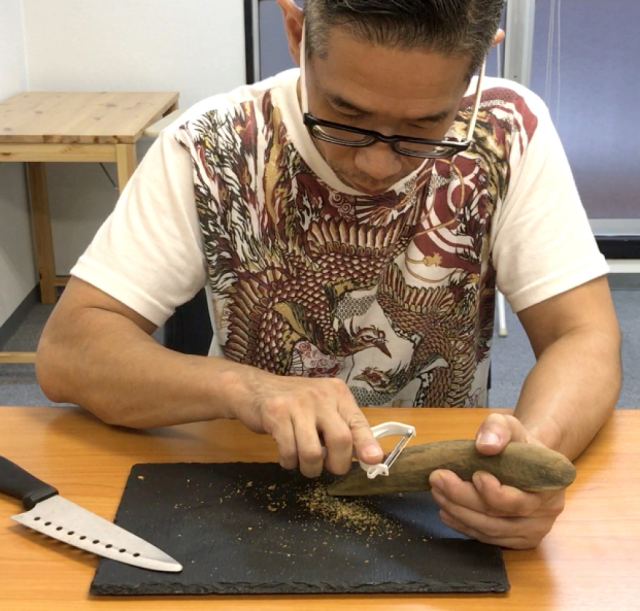
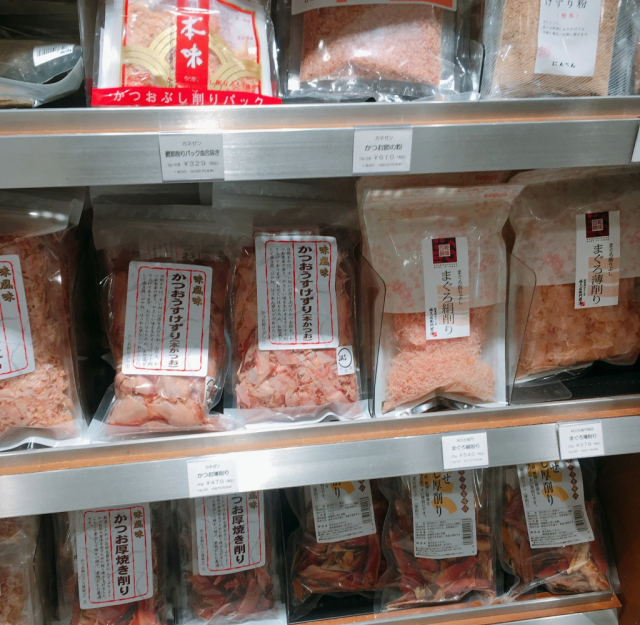
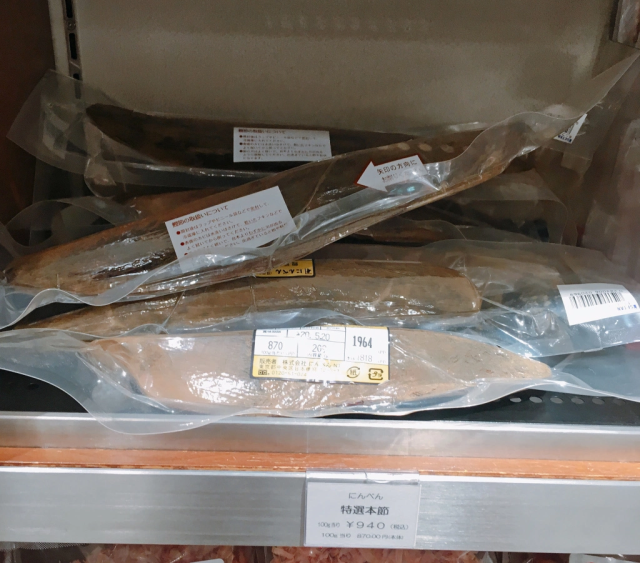
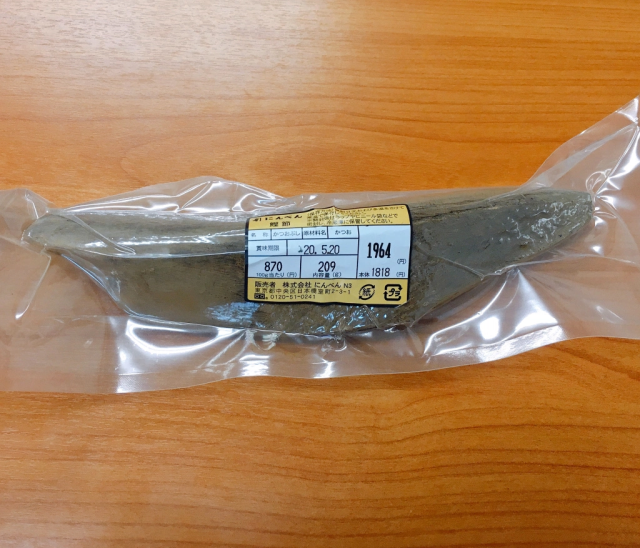
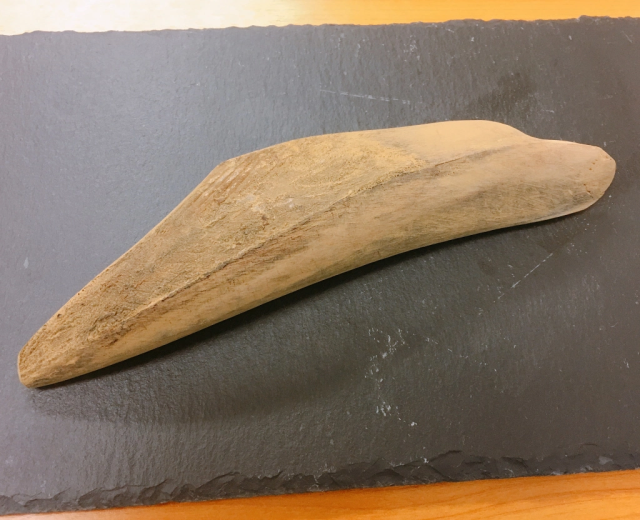
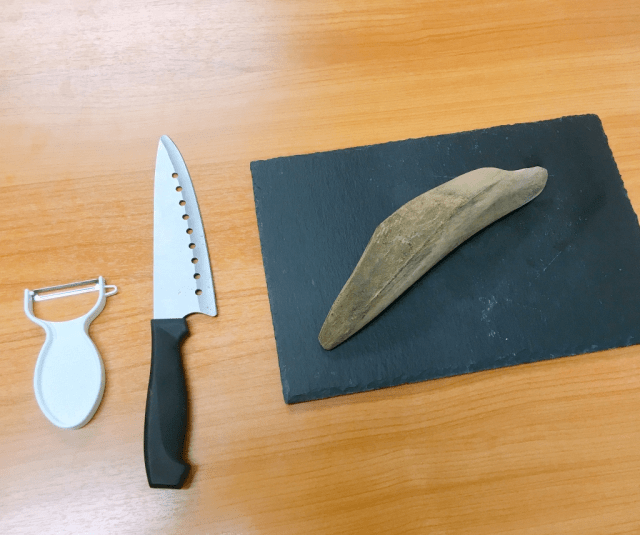
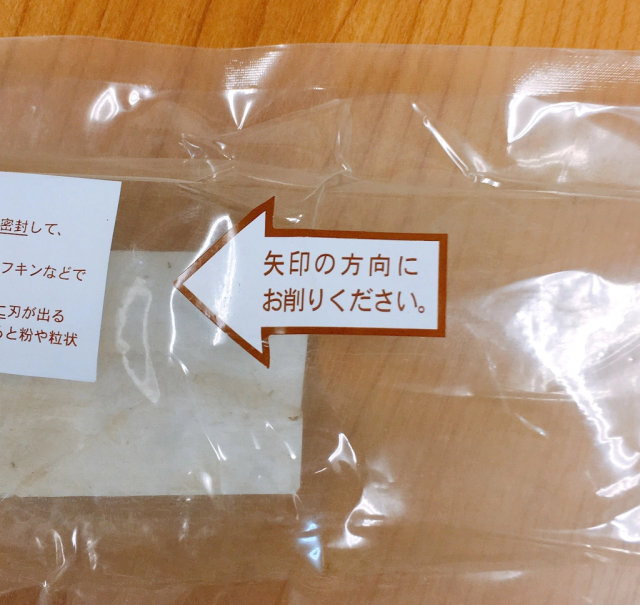
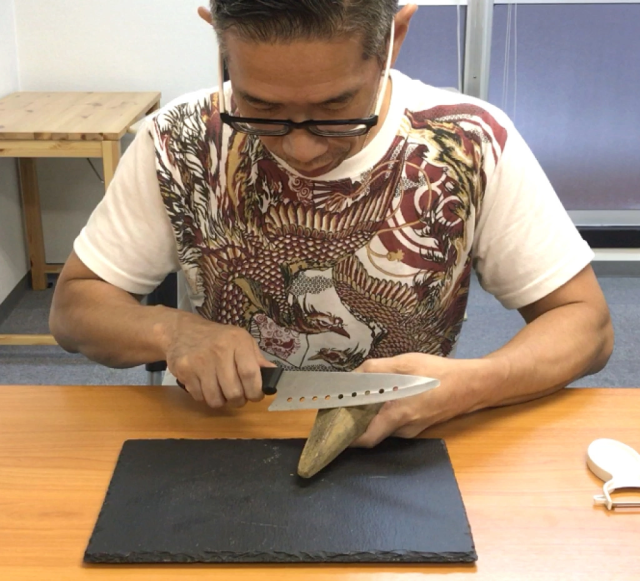
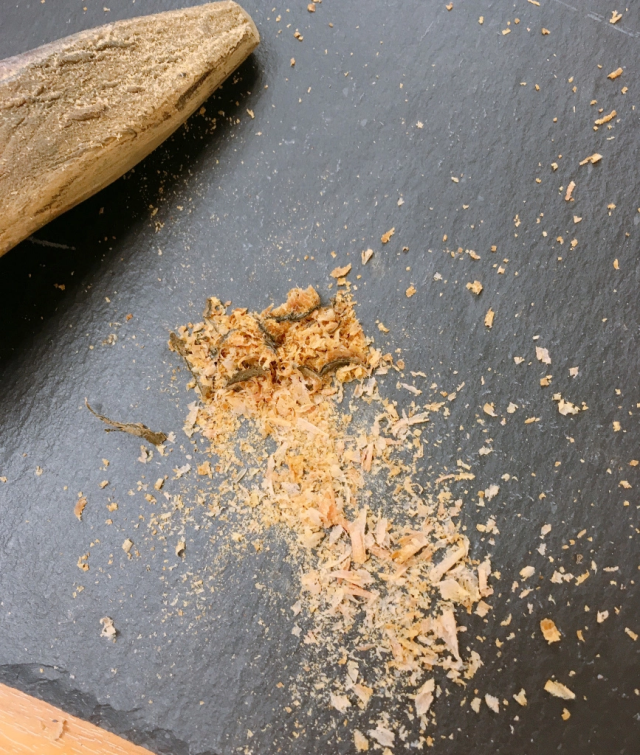
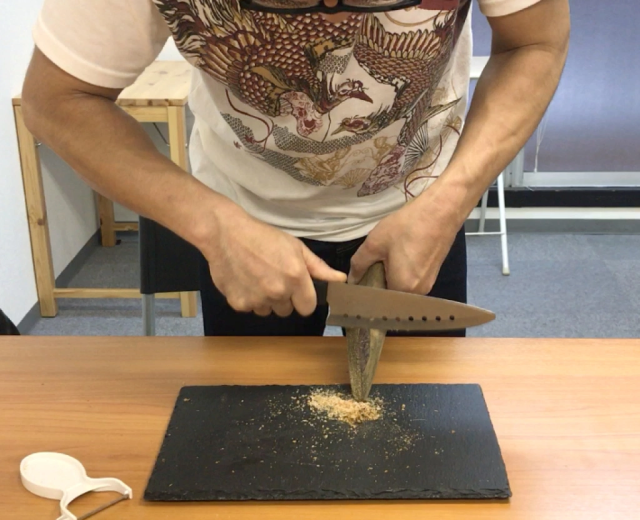
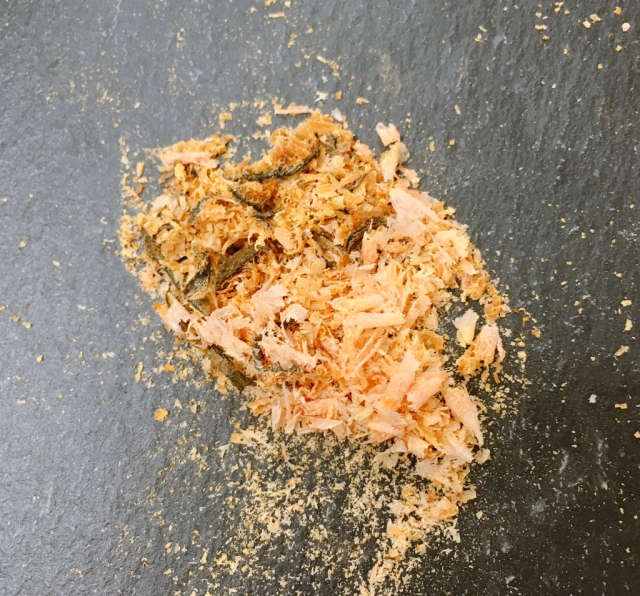
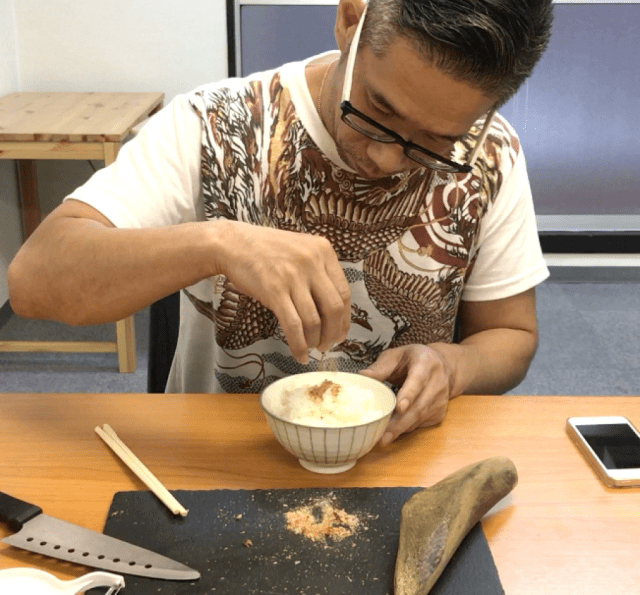
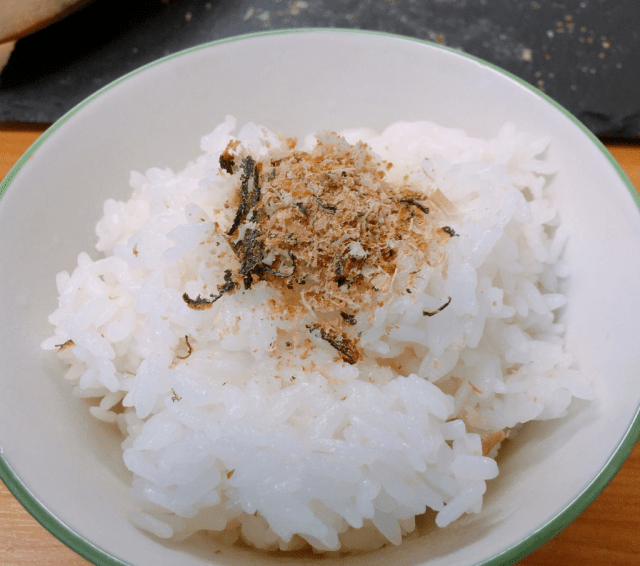
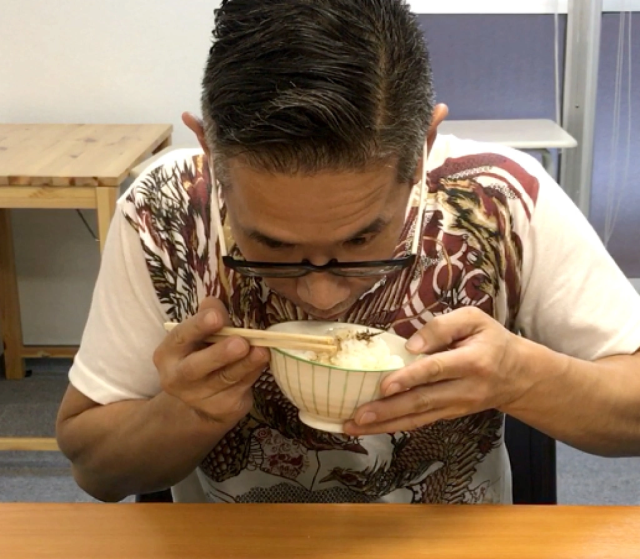

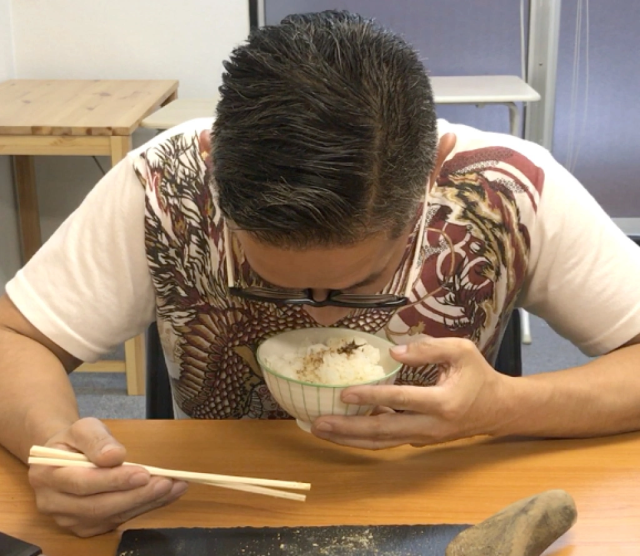
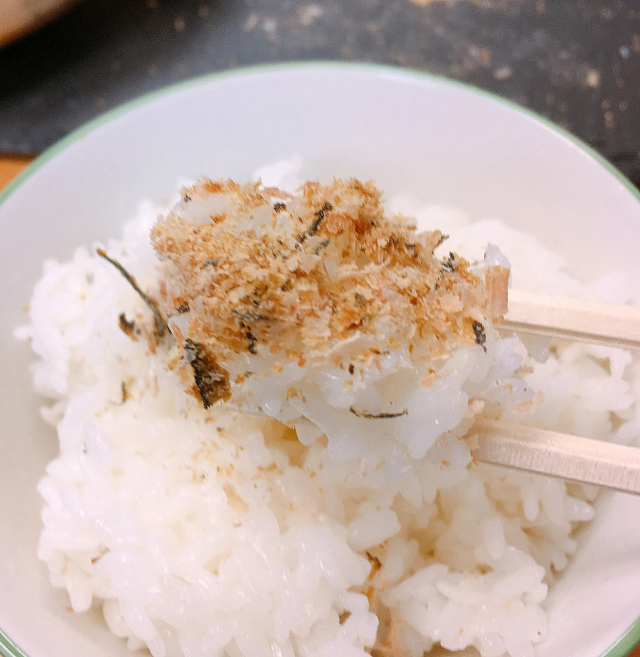
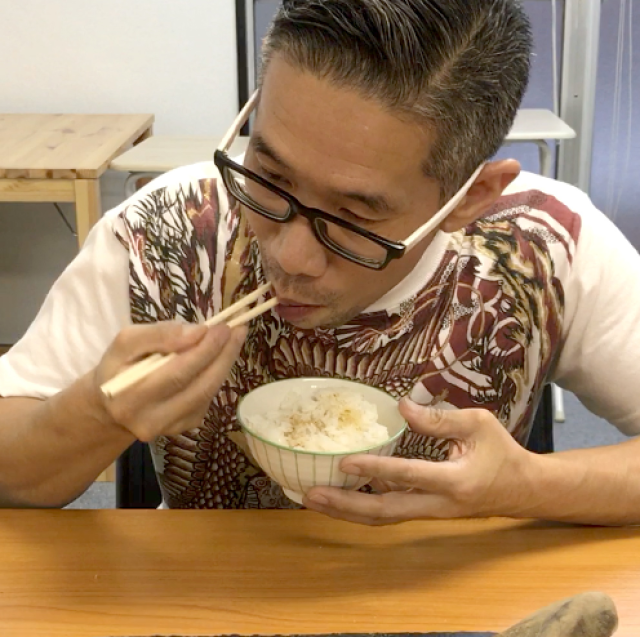
 We made three kinds of hassle-free dashi soup stock using the handily microwavable Dashi Pot
We made three kinds of hassle-free dashi soup stock using the handily microwavable Dashi Pot Be Mr. Sato’s online friend, and he might take you to dinner, like he did with these foreign fans
Be Mr. Sato’s online friend, and he might take you to dinner, like he did with these foreign fans The Gentleman’s Cheese Beef Bowl, invented by Mr. Sato
The Gentleman’s Cheese Beef Bowl, invented by Mr. Sato Japanese chain Bikkuri Donkey’s enormous salad almost beats Mr. Sato, but not because of its size
Japanese chain Bikkuri Donkey’s enormous salad almost beats Mr. Sato, but not because of its size Hida City’s tempura mochi proves that almost anything tastes better as tempura 【SoraKitchen】
Hida City’s tempura mochi proves that almost anything tastes better as tempura 【SoraKitchen】 Our reporter takes her 71-year-old mother to a visual kei concert for the first time
Our reporter takes her 71-year-old mother to a visual kei concert for the first time Beautiful new Final Fantasy T-shirt collection on the way from Uniqlo【Photos】
Beautiful new Final Fantasy T-shirt collection on the way from Uniqlo【Photos】 Disney princesses get official manga makeovers for Manga Princess Cafe opening in Tokyo
Disney princesses get official manga makeovers for Manga Princess Cafe opening in Tokyo Randomly running into a great sushi lunch like this is one of the best things about eating in Tokyo
Randomly running into a great sushi lunch like this is one of the best things about eating in Tokyo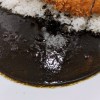 Japanese black curry “experiment” takes place at an unlikely restaurant branch in Tokyo
Japanese black curry “experiment” takes place at an unlikely restaurant branch in Tokyo Is the new Shinkansen Train Desk ticket worth it?
Is the new Shinkansen Train Desk ticket worth it? We go looking for the free kaoyu hot spring facebath of onsen town Kusatsu【Photos】
We go looking for the free kaoyu hot spring facebath of onsen town Kusatsu【Photos】 89-year-old Japanese man rides bike 600 kilometers to visit his 61-year-old son
89-year-old Japanese man rides bike 600 kilometers to visit his 61-year-old son Hey, Japanese taxi driver! Take us to your favorite restaurant in Tsuruga City!
Hey, Japanese taxi driver! Take us to your favorite restaurant in Tsuruga City!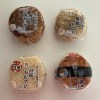 Should you warm up your convenience store onigiri rice balls in the microwave?【Taste test】
Should you warm up your convenience store onigiri rice balls in the microwave?【Taste test】 We try out “Chan Ramen”, an underground type of ramen popular in the ramen community
We try out “Chan Ramen”, an underground type of ramen popular in the ramen community New Studio Ghibli bedding sets are cool in all senses of the word
New Studio Ghibli bedding sets are cool in all senses of the word Our Japanese reporter visits Costco in the U.S., finds super American and very Japanese things
Our Japanese reporter visits Costco in the U.S., finds super American and very Japanese things Foreign English teachers in Japan pick their favorite Japanese-language phrases【Survey】
Foreign English teachers in Japan pick their favorite Japanese-language phrases【Survey】 New Pokémon cakes let you eat your way through Pikachu and all the Eevee evolutions
New Pokémon cakes let you eat your way through Pikachu and all the Eevee evolutions There’s a park inside Japan where you can also see Japan inside the park
There’s a park inside Japan where you can also see Japan inside the park Japanese convenience store packs a whole bento into an onigiri rice ball
Japanese convenience store packs a whole bento into an onigiri rice ball Hanton rice — a delicious regional food even most Japanese people don’t know about, but more should
Hanton rice — a delicious regional food even most Japanese people don’t know about, but more should Final Fantasy, Kingdom Hearts, and Dragon Quest pet product line announced by Square Enix
Final Fantasy, Kingdom Hearts, and Dragon Quest pet product line announced by Square Enix Studio Ghibli releases Kiki’s Delivery Service chocolate cake pouches in Japan
Studio Ghibli releases Kiki’s Delivery Service chocolate cake pouches in Japan Japan’s bone-breaking and record-breaking roller coaster is permanently shutting down
Japan’s bone-breaking and record-breaking roller coaster is permanently shutting down New definition of “Japanese whiskey” goes into effect to prevent fakes from fooling overseas buyers
New definition of “Japanese whiskey” goes into effect to prevent fakes from fooling overseas buyers Foreign passenger shoves conductor on one of the last full runs for Japan’s Thunderbird train
Foreign passenger shoves conductor on one of the last full runs for Japan’s Thunderbird train Kyoto bans tourists from geisha alleys in Gion, with fines for those who don’t follow rules
Kyoto bans tourists from geisha alleys in Gion, with fines for those who don’t follow rules Studio Ghibli unveils Mother’s Day gift set that captures the love in My Neighbour Totoro
Studio Ghibli unveils Mother’s Day gift set that captures the love in My Neighbour Totoro Domino’s Japan now sells…pizza ears?
Domino’s Japan now sells…pizza ears? Toyota built a life-sized Miraidon Pokémon and are letting people test drive it this weekend
Toyota built a life-sized Miraidon Pokémon and are letting people test drive it this weekend New Japanese KitKat flavour stars Sanrio characters, including Hello Kitty
New Japanese KitKat flavour stars Sanrio characters, including Hello Kitty Sales of Japan’s most convenient train ticket/shopping payment cards suspended indefinitely
Sales of Japan’s most convenient train ticket/shopping payment cards suspended indefinitely Sold-out Studio Ghibli desktop humidifiers are back so Totoro can help you through the dry season
Sold-out Studio Ghibli desktop humidifiers are back so Totoro can help you through the dry season Japanese government to make first change to romanization spelling rules since the 1950s
Japanese government to make first change to romanization spelling rules since the 1950s Ghibli founders Toshio Suzuki and Hayao Miyazaki contribute to Japanese whisky Totoro label design
Ghibli founders Toshio Suzuki and Hayao Miyazaki contribute to Japanese whisky Totoro label design Doraemon found buried at sea as scene from 1993 anime becomes real life【Photos】
Doraemon found buried at sea as scene from 1993 anime becomes real life【Photos】 Tokyo’s most famous Starbucks is closed
Tokyo’s most famous Starbucks is closed One Piece characters’ nationalities revealed, but fans have mixed opinions
One Piece characters’ nationalities revealed, but fans have mixed opinions We asked a Uniqlo employee what four things we should buy and their suggestions didn’t disappoint
We asked a Uniqlo employee what four things we should buy and their suggestions didn’t disappoint Princesses, fruits, and blacksmiths: Study reveals the 30 most unusual family names in Japan
Princesses, fruits, and blacksmiths: Study reveals the 30 most unusual family names in Japan Studio Ghibli’s new desktop Howl’s Moving Castle will take your stationery on an adventure
Studio Ghibli’s new desktop Howl’s Moving Castle will take your stationery on an adventure Can a plant-based restaurant serving Buddhist meals turn meat-loving Mr. Sato into a vegetarian?
Can a plant-based restaurant serving Buddhist meals turn meat-loving Mr. Sato into a vegetarian? Sushi for breakfast? Our under-1,000-yen breakfast with Hama Sushi’s new morning menu
Sushi for breakfast? Our under-1,000-yen breakfast with Hama Sushi’s new morning menu $89 “Phantasmal Sushi Roll” fancies up life with Matsusaka beef and truffle salt 【Taste Test】
$89 “Phantasmal Sushi Roll” fancies up life with Matsusaka beef and truffle salt 【Taste Test】 Pretty Princess Sato: Our hero gets his makeup done by a pro, brings all the boys to the yard
Pretty Princess Sato: Our hero gets his makeup done by a pro, brings all the boys to the yard Is that restaurant in Tokyo with the giant mecha crab sign any good?
Is that restaurant in Tokyo with the giant mecha crab sign any good? Mr. Sato channels his inner Elsa, books a night at a Hokkaido ice hotel 【Photos】
Mr. Sato channels his inner Elsa, books a night at a Hokkaido ice hotel 【Photos】 This is what a 10,800-yen (US$100) Tokyo sushi boxed lunch looks like【Taste test】
This is what a 10,800-yen (US$100) Tokyo sushi boxed lunch looks like【Taste test】 Mr. Sato discovers the band of his dreams: this small box
Mr. Sato discovers the band of his dreams: this small box Takoyaki store in Tsukiji serves up dried bonito flakes even bigger than the octopus balls
Takoyaki store in Tsukiji serves up dried bonito flakes even bigger than the octopus balls Kakiage towers and Italian soba? We try out a unique soba restaurant in Tokyo
Kakiage towers and Italian soba? We try out a unique soba restaurant in Tokyo Mr. Sato broadens his home drinking horizons at Kaldi【Japan’s Best Home Senbero】
Mr. Sato broadens his home drinking horizons at Kaldi【Japan’s Best Home Senbero】 Around Japan in 47 rice balls: Mr. Sato buys each prefecture’s musubi all from one Tokyo shop
Around Japan in 47 rice balls: Mr. Sato buys each prefecture’s musubi all from one Tokyo shop Choshimaru offers a limited-time Explodingly Big Sushi Roll, or basically sushi in sushi armor
Choshimaru offers a limited-time Explodingly Big Sushi Roll, or basically sushi in sushi armor We visit the new Japan branch of Wayback Burgers, try their vegan set, notice a big problem
We visit the new Japan branch of Wayback Burgers, try their vegan set, notice a big problem Is it possible to make a cheap senbero drinking party with your dog? 【Japan’s Best Home Senbero】
Is it possible to make a cheap senbero drinking party with your dog? 【Japan’s Best Home Senbero】 Mr. Sato shows us what happens when you try to cook rice with only eggs 【SoraKitchen】
Mr. Sato shows us what happens when you try to cook rice with only eggs 【SoraKitchen】 Japanese cafe lets customers enjoy random flavors of coffee using capsule vending machines
Japanese cafe lets customers enjoy random flavors of coffee using capsule vending machines
Leave a Reply